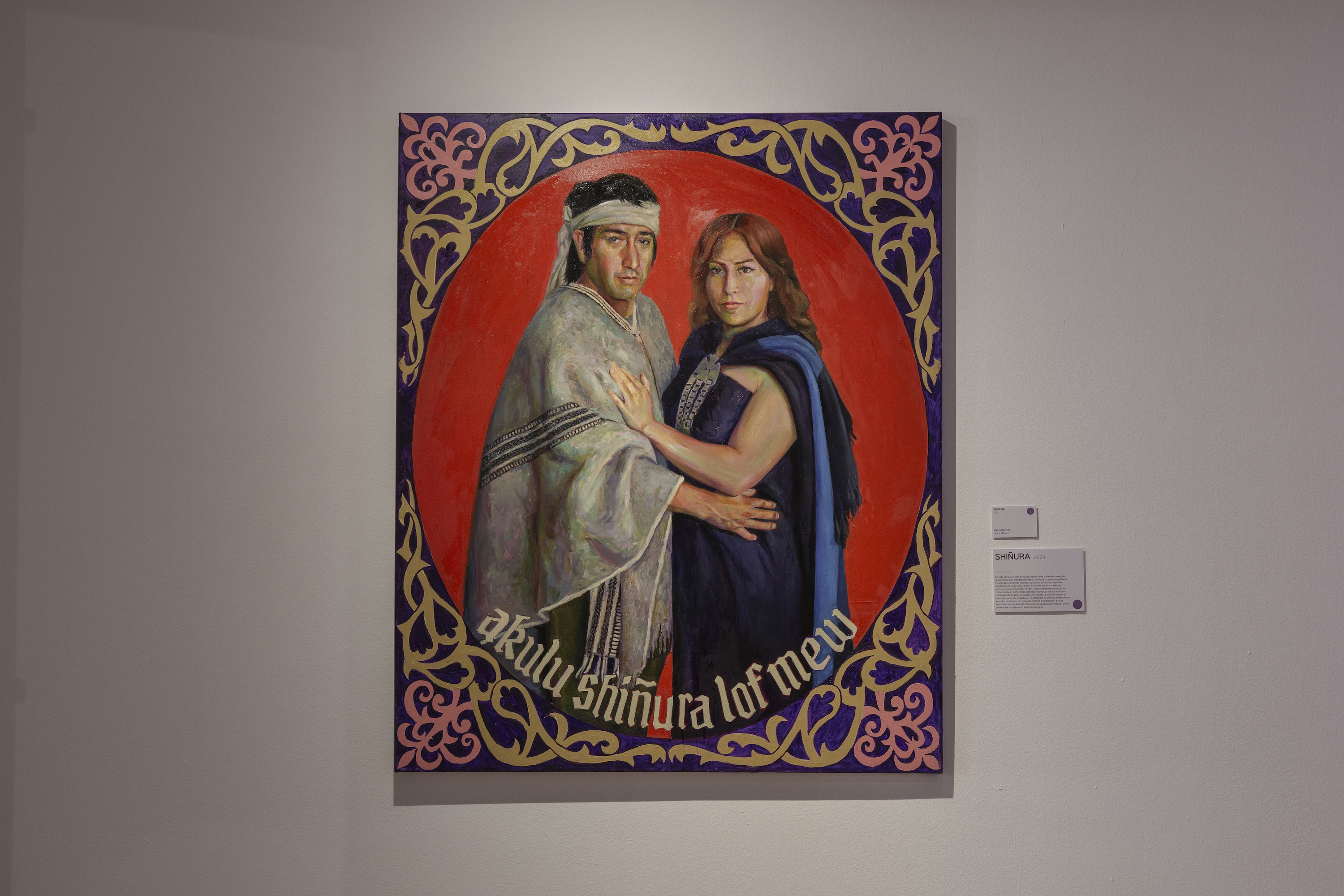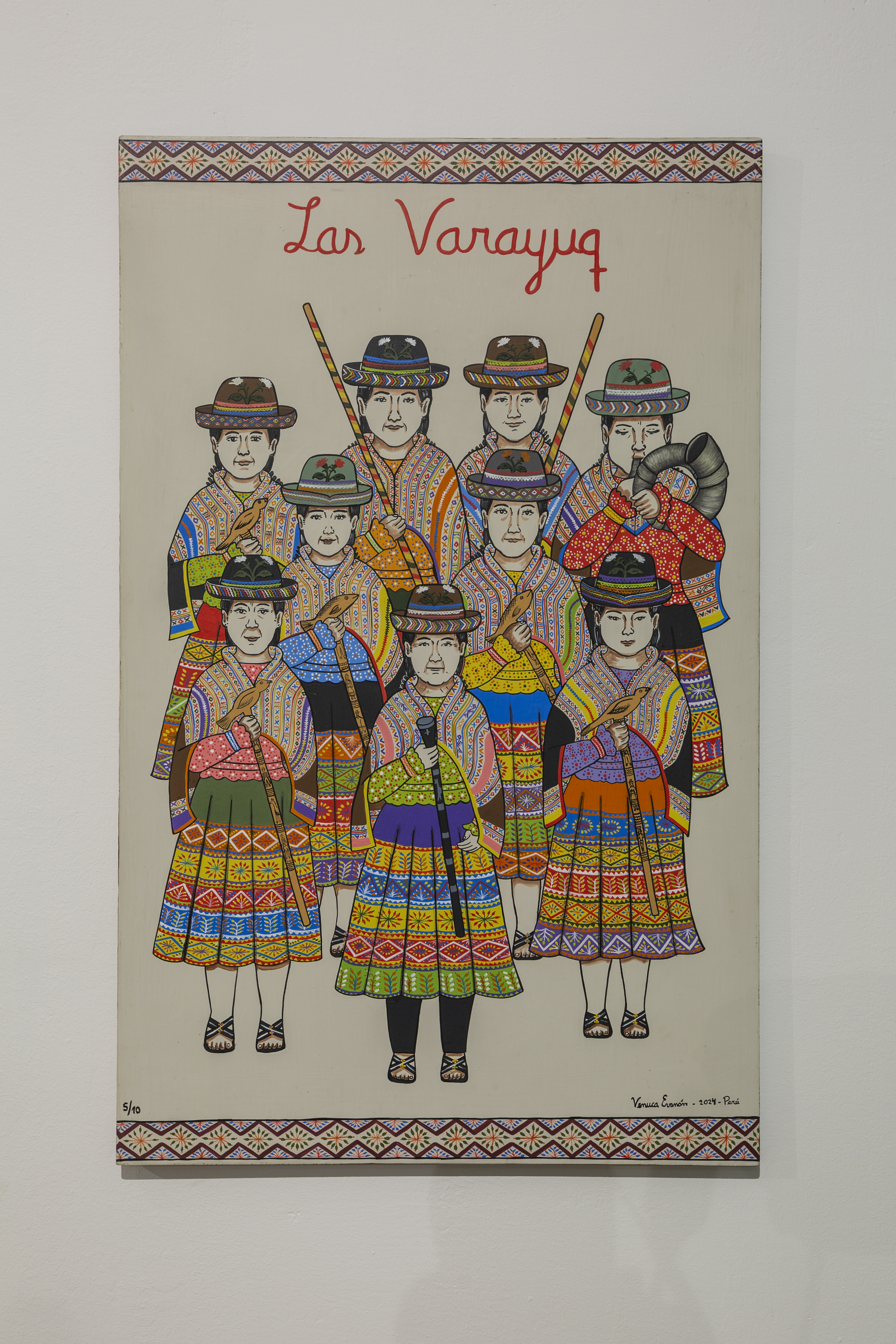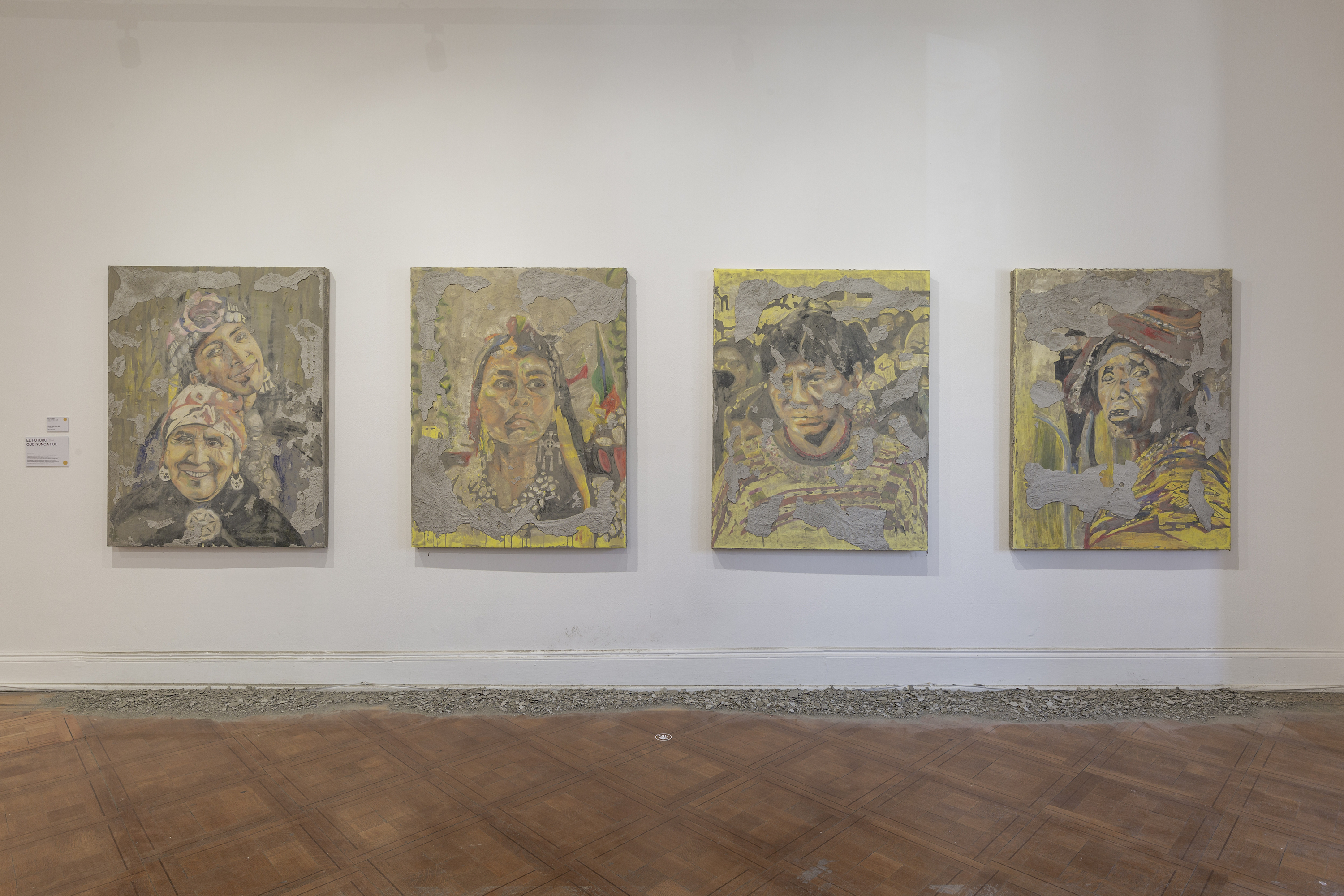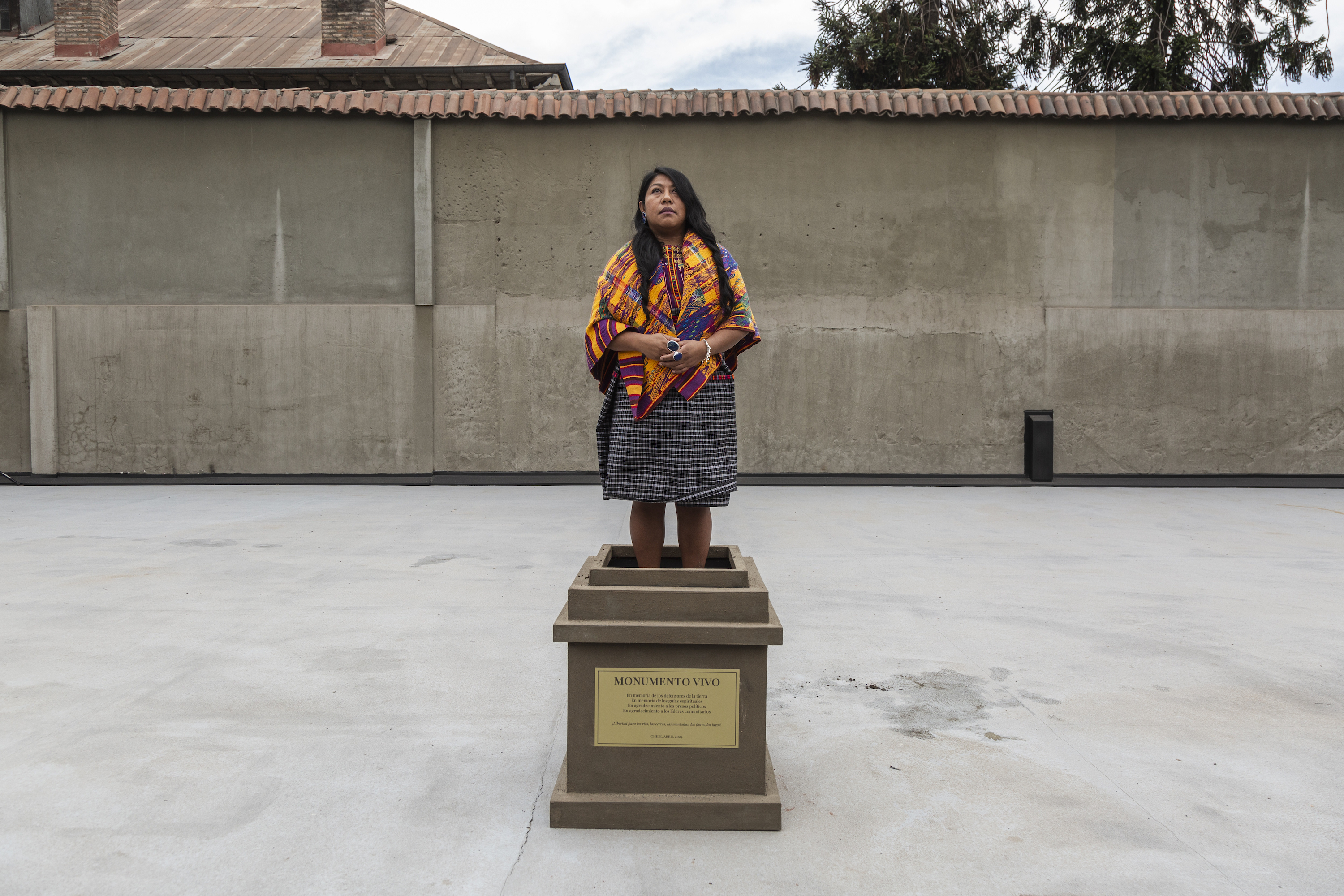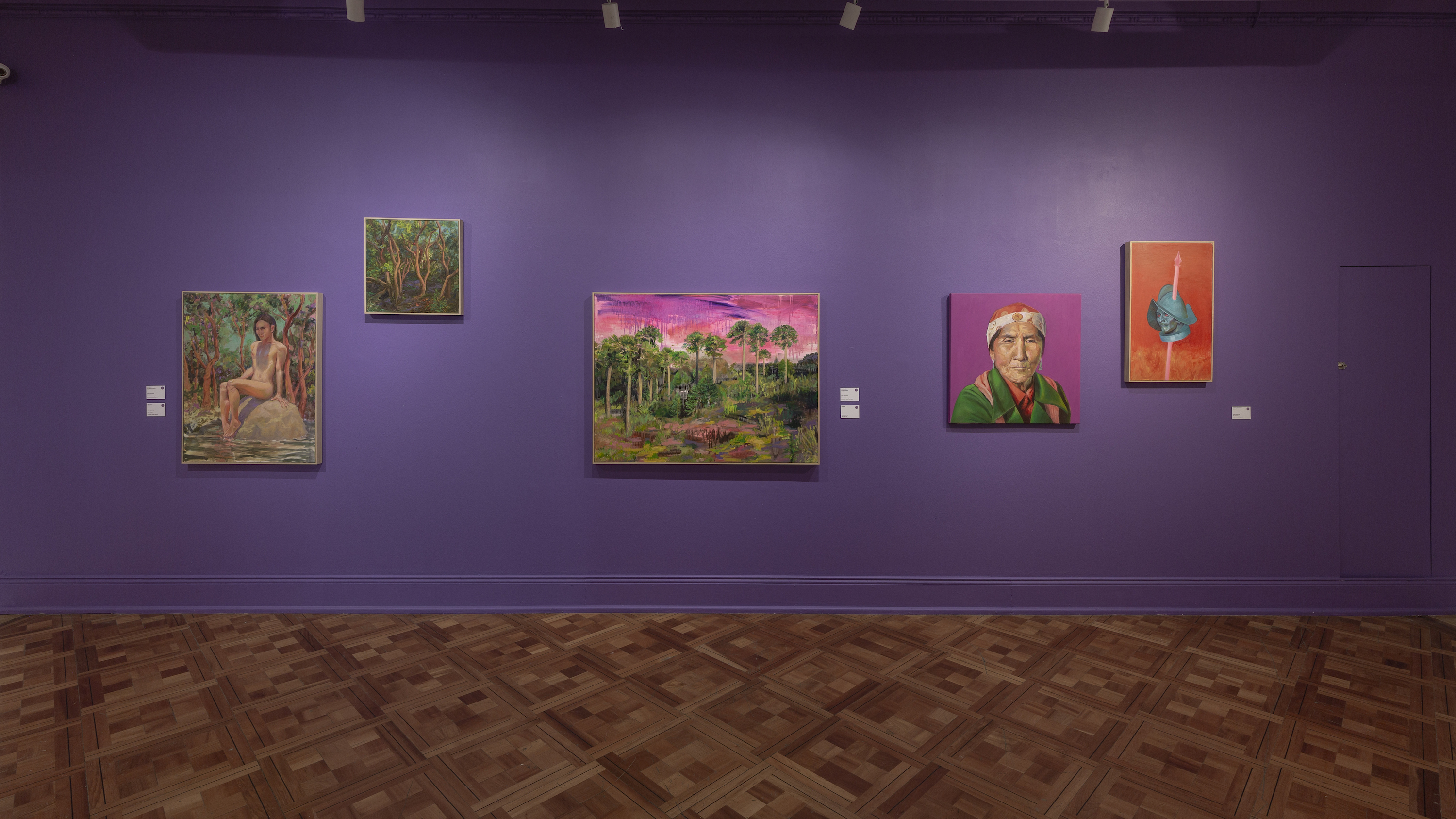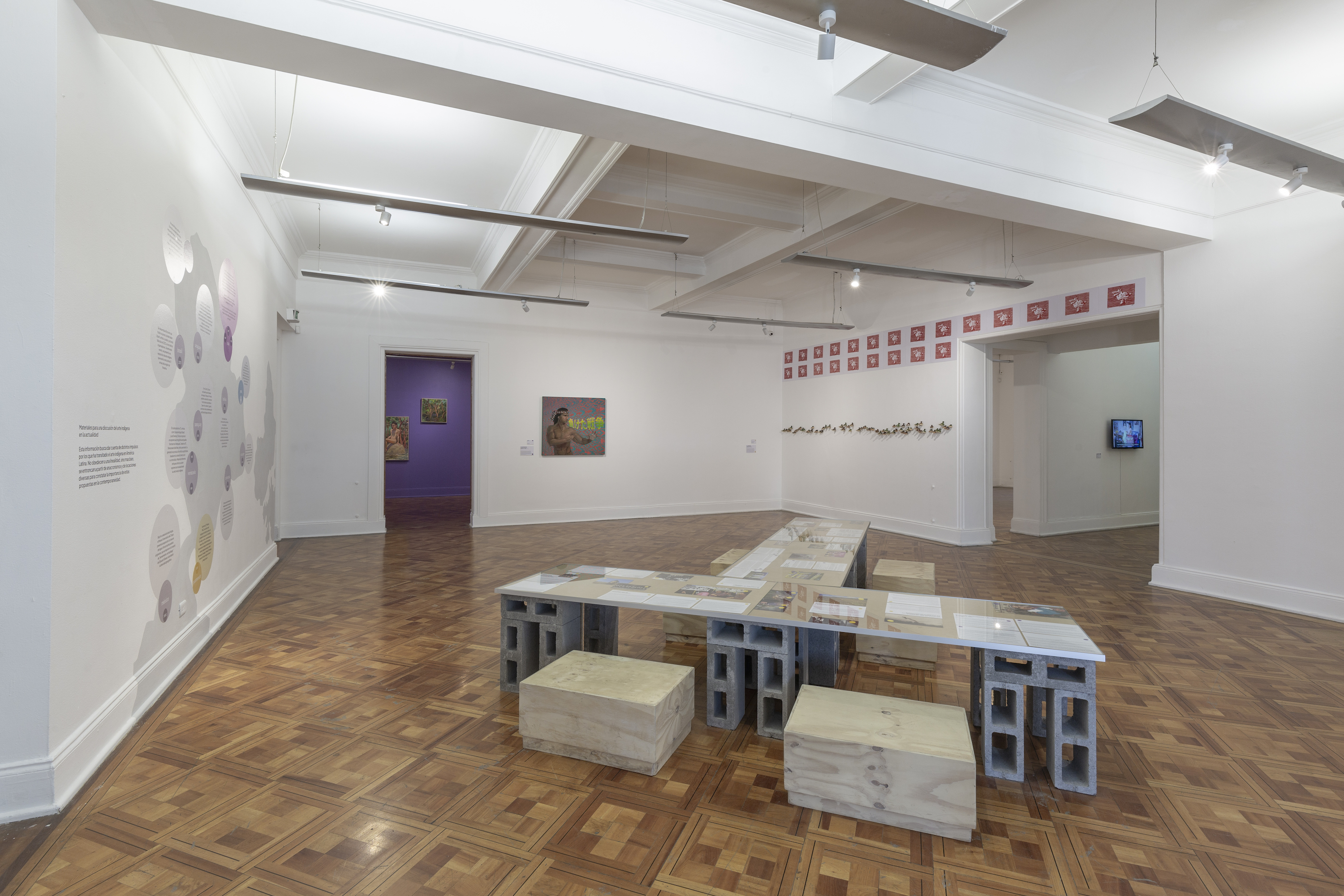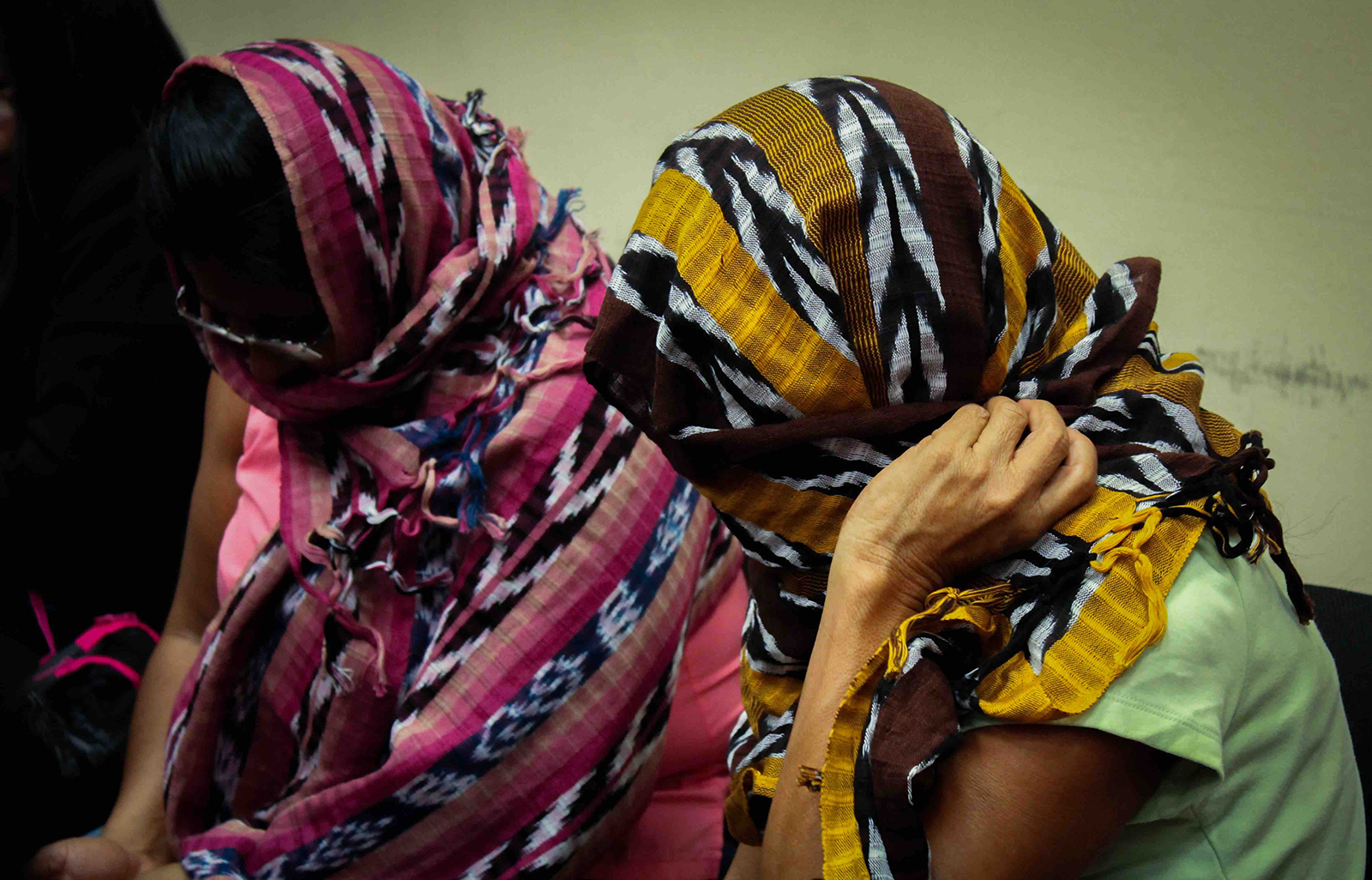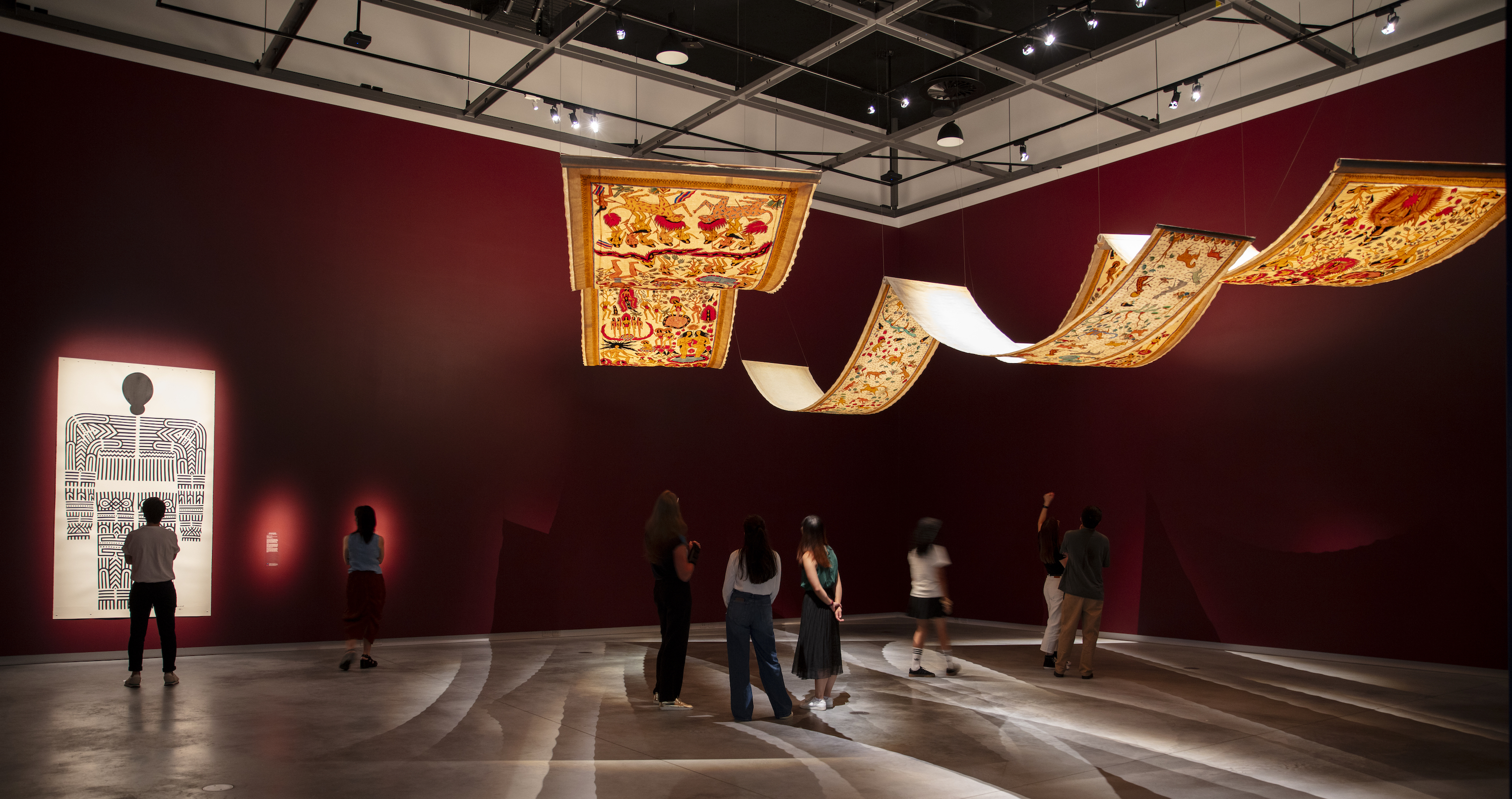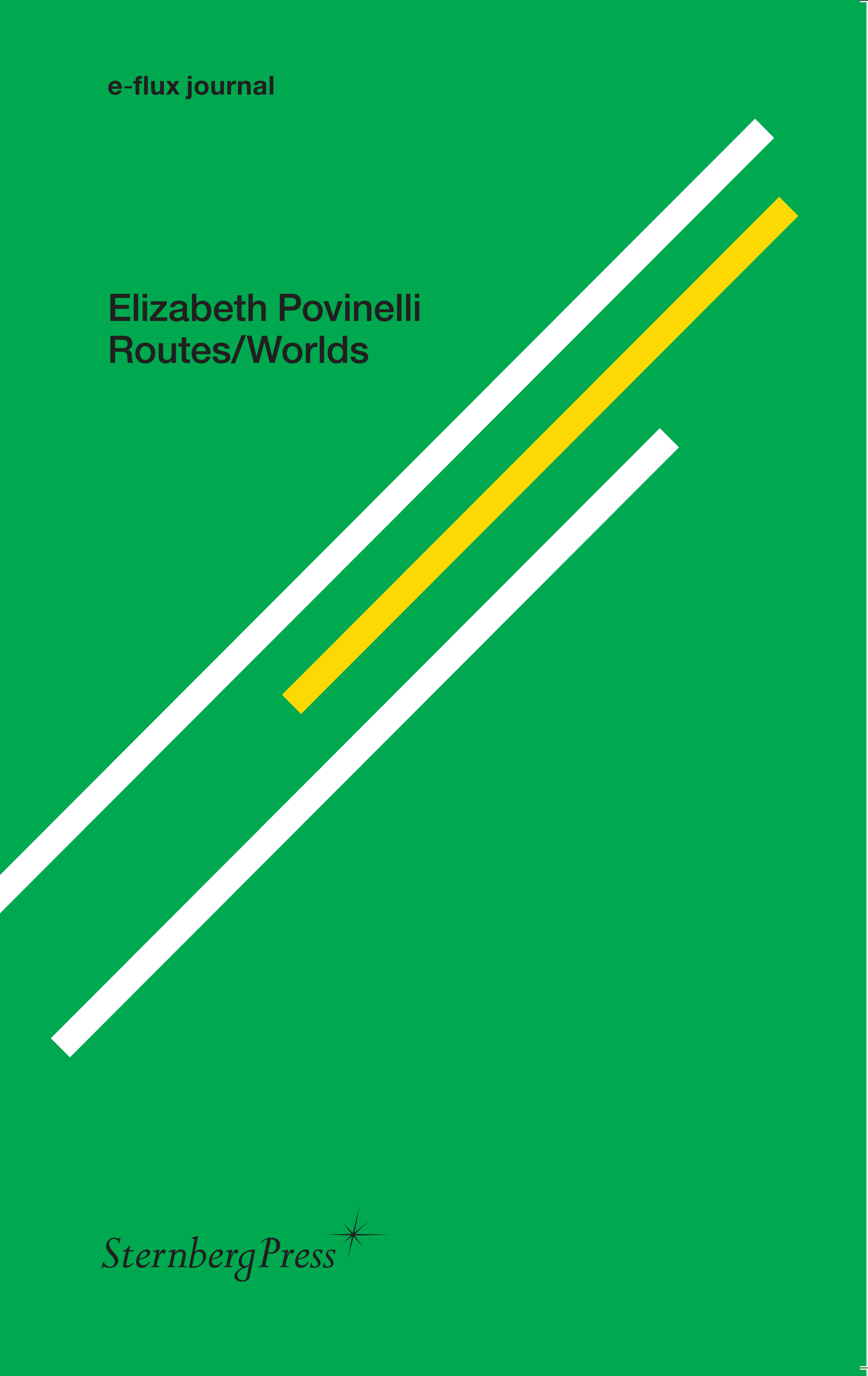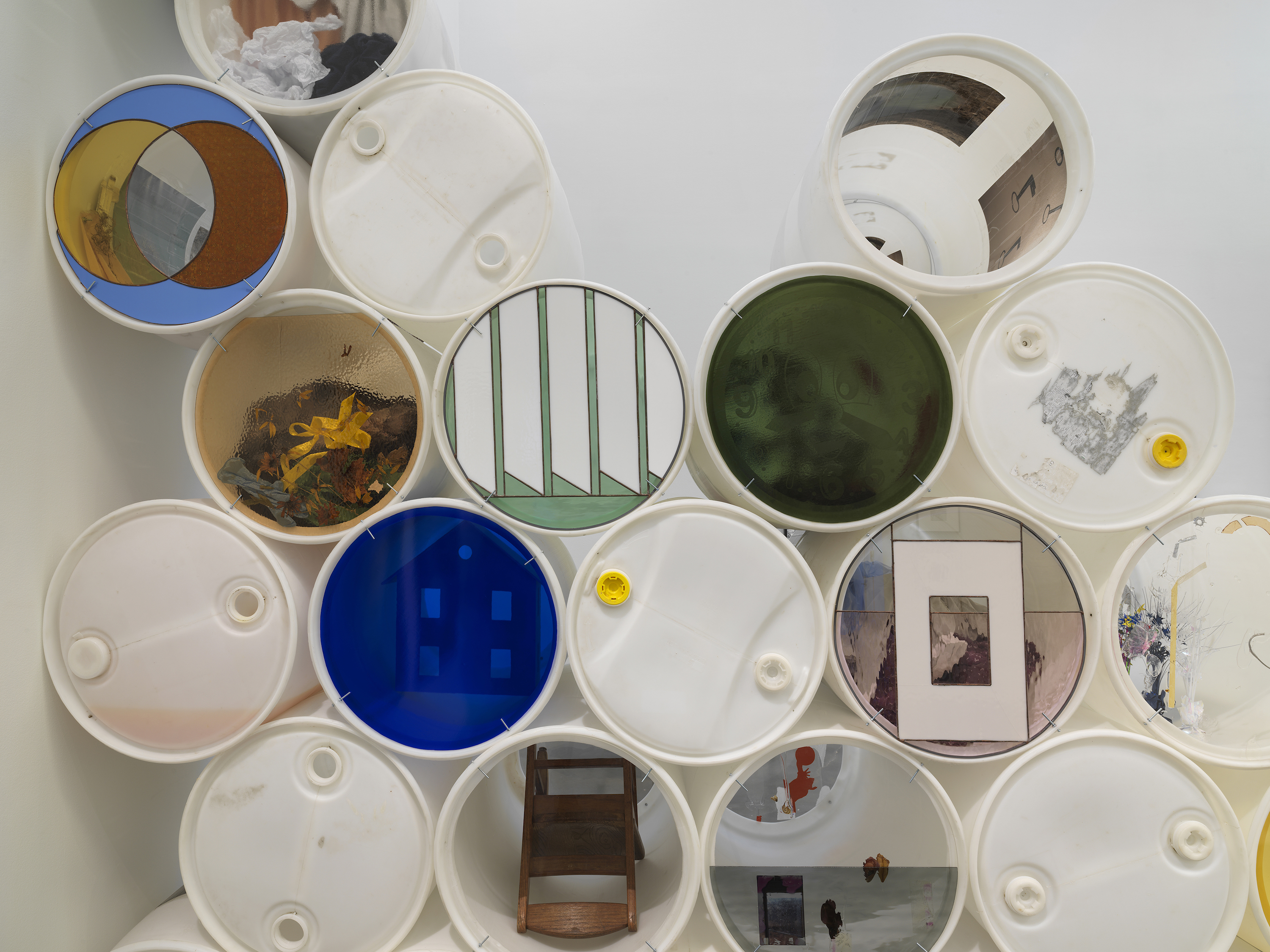April 13–September 1, 2024
A detail in a painting by Venuca Evanán says it all. Tabla Apaykuy y las delicias de Villa (2019/24) depicts a scene typical of the artist’s Peruvian Sarhua community—several members in traditional clothing stand beneath an anthropomorphic sun and against sinuous hills—but, among the mountains, there are pylons. This exhibition—curated by Cristian Vargas Paillahueque and featuring Marilyn Boror Bor, Evanán, and Pablo Lincura—foregrounds aesthetic and thematic deviations from traditional depictions of Indigenous life. Its title, which translates as “Leaks of our own. Indigenous visualities from south to north,” promises escape from the obligation to explore ancestral themes or work within the supposed conventions of an Indigenous tradition, as if it had remained unchanged since pre-Hispanic times.
Marilyn Boror Bor is from San Juan Sacatepéquez, a municipality that has suffered water shortages since the completion in 2018, against the wishes of the local Indigenous community, of Cementos Progreso’s San Gabriel cement plant. In Monumento vivo [Living monument] (2021–ongoing), a documented performance, the Mayan Kaqchikel artist stands on a plinth and covers her ankles with cement, merging with it in an action that seeks to commemorate the struggles of Indigenous peoples and defenders of the land, as well as referring to the “human zoos” of the nineteenth century. El futuro que nunca fue [The future that never was] (2024) is the antithesis: in a performance and painting, Boror destroys a thick layer of dry cement with hammer blows, revealing the painted portraits of Indigenous women leaders fighting against invasive industries. Both of these works, which were first performed in Chile, resonated with greater power during subsequent performances in Guatemala, where the spectators were victims of Cementos Progreso’s extractivism.
Pablo Lincura’s paintings, hung in their own room against pink-painted walls, reflect on issues that caused division within the Chilean Mapuche community, and bring together references to pop culture, Asian visual aesthetics (inspired in part by the seven years he spent living in China), and soap operas. Guerrero mapuche (2010) is the portrait of an Indigenous warrior painted as if he were a samurai. Shiñura (2024), the title of which refers to marriages between Indigenous and Spanish individuals which improve the social standing of the former within the community, is a pastiche of staged images used to promote sitcoms. In Lincura’s confrontational work, the Indigenous artist represents not just their own culture but that of a globalized modernity typically presumed to be the ground of “western” artists.1 That Indigenous artists addressing queer, gender, or ethnically non-essentialist themes remains taboo was demonstrated last year by the negative responses to Lincura’s collaboration with queer collective House of Abya Yala on a Mapudungun version of Supernova’s 1999 pop hit “Tú y Yo.”2
Lincura and Boror deviate from the supposed basis of Indigenous art in craft and rural traditions in their modern update of ancestral techniques. Evanán inherits the tradition of Sarhua tabla, the practice of decorating the main beam that supports the roof of a house, from the Sarhuina community of Ayacucho. The artist’s versions, which follow the tradition’s unwritten rule book, are made of wood drawn with feathers and painted with natural pigments, and stress the convention by telling family stories at once erotic and critical. Autorretrato erótico [Erotic self-portrait] (2023), is a Sarhua variety of the Kama Sutra. Las Varayuq [The Cane-holders] (2019/24) is an imitation of the varayoc rods used by men in Andean communities to signal authority, its surface painted with scenes depicting the lives of women. Across her work, Evanán vindicates the role of Sarhuina women against their patriarchal community—and Sarhua tabla itself. Traditionally, painting Sarhua panels is exclusively done by men.
This exhibition joins others—including at Palacio Pereira, the Museo Precolombino, and Museo Nacional de Bellas Artes—as proof of a growing interest in Chilean Indigenous art. “Fugas de lo nuestro” asserts a non-essentialist approach to those traditions. It does not defend a hermetic discourse but seeks instead to open up debate and move away from clichés. This is a commendable ambition, working against the caricaturing of contemporary Indigenous art, those exoticizing experiences, usually produced from and for the “Global North,” marked by touristy versions of the shamanic and the ritualistic dubbed into English.
Lincura’s approach brings to mind the Mapuche word champurria, which denotes a Mapuche individual with both Mapudungun and European names, and more broadly refers to that which is mixed or contaminated in Mapuche culture. See Daniela Catrileo’s recent book-length essay about the origin and evolution of this concept: Sutura de las aguas. Un viaje especulativo sobre la impureza (Santiago: Kikuyo Editorial, 2024).
Pablo Lincura, “Eymi iñchiw (Tú y yo) ft. House of Abya Yala,” YouTube (January 2023), https://www.youtube.com/watch?v=19g-yoABmUY.
